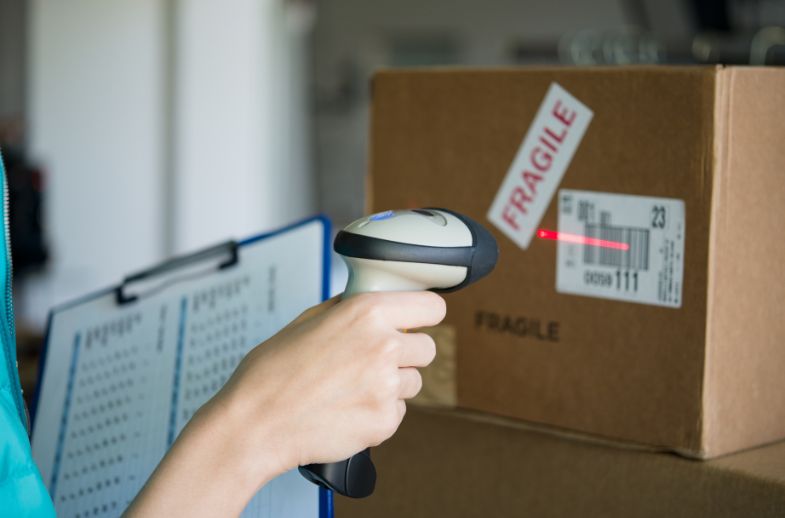Barcode Tracking Tips for Construction Assets

Any construction project must have efficient financial management to be successful. Construction companies depend on various tools, equipment, and materials to finish the task quickly and affordably. The proper arrangements, framework, and tools can make managing these assets manageable. Barcode tracking is helpful in this situation. When provided with a quick and efficient approach to tracking and managing assets, barcode tracking can revolutionize asset management in the construction sector.
Construction companies can easily manage their materials, tools, and equipment throughout the project by implementing barcode tracking. This technology makes real-time updates on resource status and location possible, lowering the possibility of loss or misplacement. This blog post will examine some essential tips for implementing barcode tracking for construction assets.
Barcode Tracking Tips for Construction Assets
Here, we explain the essential barcode tracking tips for construction assets.
Select the Right Barcode System
The first step in enforcing barcode tracking for construction property is selecting the proper device. Many barcodes exist, which include 1D (linear) and 2D (matrix) barcodes. Choose a barcode type based totally on the assets you want to music and your needs. While 1D barcodes are generally used for equipment and equipment, 2D barcodes can shop greater records and are appropriate for tracking substances or more tremendous assets. Consider using QR codes, a form of 2D barcode, as they’re easily scannable with smartphones and drugs, making information capture extra handy.
Create a Comprehensive Asset Database
Maintaining a secure asset database is essential before using barcode tracking. A complete description of each asset, including its name, serial number, purchase date, maintenance history, and location, should be included in this database. Asset tracking is more effective and informative when you can accurately link each barcode to the data in a comprehensive asset database. Making informed decisions about maintenance, repairs, and replacements is more accessible when you have a complete asset database, enabling effective asset management.
Standardize Asset Labeling
To ensure consistency and accuracy in asset tracking, standardize the labeling of your construction assets. Create a labeling system that is easy to understand and use. Label each purchase with a unique barcode corresponding to the asset’s entry in your asset database. Including additional information like the asset name and location on the label can be helpful for quick identification. Consider including the date of obtaining or purchase on the title to support tracking the asset’s lifespan and depreciation.
You should regularly review and update your labeling system to consider any modifications or additions to your inventory of construction assets.
Choose the Right Barcode Scanner
Invest in brilliant barcode scanners that are suitable for the development environment. Consider the use of ruggedized scanners that face up to dust, dirt, and capacity drops. Mobile barcode scanning apps also can be useful for on-web page asset tracking, as they can be mounted on smartphones or drugs, getting rid of the want for specialized scanning devices. These apps allow smooth integration with different production control software programs, streamlining the workflow.

Train Your Team
Proper training ensures your construction team can use the barcode tracking system effectively. Train your employees to scan barcodes accurately, update asset information, and troubleshoot common issues. Maintaining the system’s accuracy and effectiveness involves regular training sessions and refresher courses. You must continue to support and direct your team, addressing any problems or questions that might arise as they use the barcode tracking system. This will boost their sense of competence and self-assurance, enabling them to use the system effectively and maximize productivity while minimizing errors.
Implement Regular Audits
Regular audits of your construction assets are essential, even with a barcode tracking system. Audits help verify the accuracy of the asset database and ensure that purchases are in the right location and in good working condition. Conduct surprise audits to discourage mismanagement or theft of assets. Surprise audits also provide an opportunity to identify gaps or weaknesses in the tracking system and make necessary improvements. Routine audits can help locate useless or inefficient assets that can be sold or repurposed, saving the construction company money.
Integrate with Asset Management Software
Consider integrating your barcode tracking system with asset management software. This can provide real-time visibility into your construction assets and streamline maintenance scheduling, depreciation tracking, and asset allocation tasks. Integration with software can enhance the overall efficiency of asset management in your construction projects. Determining any possible difficulties or inefficiencies in the construction process can also be helped by integrating barcode tracking with asset management software.
Benefits of Barcode Tracking in Construction
In this section, you can elaborate on the advantages of using barcode tracking, specifically in the construction industry. Discuss how it can improve efficiency, reduce errors, save costs, and enhance overall project management. It is in the construction industry offers numerous benefits. Firstly, it significantly improves efficiency by streamlining construction materials and equipment. With monitoring and control with barcode labels attached to each item, workers can quickly scan and update their locations, allowing for quick identification and retrieval.
Best Practices for Barcode Implementation
Share specific best practices and tips for implementing barcode tracking on construction projects. This could include insights on where to place barcodes on assets, how to handle damaged or missing barcodes, and ways to ensure data accuracy. A uniform naming convention for barcodes ensures uniformity and facilitates tracking. Depending on the asset type and unique designators, this may involve using a combination of numeric characters. Furthermore, regular maintenance and inspections should be conducted to ensure that barcode labels are not damaged or missing, and any issues should be promptly addressed to maintain accurate data tracking.
Final Words
Barcode tracking is a powerful tool for managing construction assets efficiently. When construction companies select the right barcode system, maintain a comprehensive asset database, standardize asset labeling, invest in quality scanners, train their teams, conduct regular audits, and integrate with asset management software, they can significantly improve asset tracking and reduce operational costs. Embracing barcode tracking technology can help construction companies stay competitive in a challenging industry where effective asset management is vital to success.






